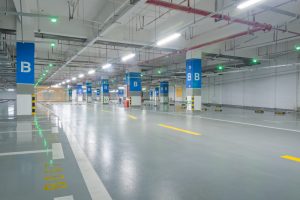As Businesses Cram More Workers into Office Space, Comfort and Privacy Are Sacrificed

 Office space per employee is shrinking, and nowhere is that more evident than in New York.
Office space per employee is shrinking, and nowhere is that more evident than in New York.
In the past few years, office space per employee has been decreasing at an alarming rate. In 2010, the average American office had about 225 square feet per employee, but by 2012, that number had dropped to 176 square feet for every worker.
For some people, moving to a smaller office space is a punishment: this month, former New York State Assembly Speaker Sheldon Silver, who has been accused of accepting $4 million in bribes, got downgraded from plush accommodations in the Capitol to a couple of nondescript rooms in Albany’s Legislative Office Building.
But for most workers, having less space is just business as usual, especially in crowded urban areas like Manhattan.
The New York Times profiled online marketing company Yodle. As the business expands, workers find themselves sharing more space with their coworkers.
There also aren’t any private offices. Dafna Sarnoff, who’d worked as a VP at American Express, was shocked when she was hired on and had to sit at a desk in the office’s open layout.
Even the company’s chief executive, Court Cunningham, sits with his workers and says he has no desire for a private office.
While may some see this as a way to increase team building among workers and management, for most companies, it’s about cutting costs.
Due to rising rents, Yodle has had to find ways to squeeze employees into tighter spaces. The average square footage per employee at the company has recently decreased from 137 to 122.
As more companies choose to downgrade or further limit their employees’ space, they may find themselves relying on office furniture installation services for more creative solutions.
“When a business considers conserving office space, several factors come into play,” says John Kiel, Vice President, Precision Office Furniture Installation. “Offices/work spaces could take on a utilitarian look which provides employees less space for personalization, less privacy, and increased noise levels. Some businesses use office space (size) as a “perk” for advancement within their organization. Businesses are embracing the flex-time concept for their employees as well as providing home offices. In doing so, this reduces the actual number of employees who physically work in the office. Furniture manufacturers are creating solutions for scaled down office/work spaces. They are maximizing the efficiency of the work space, which provides the appeal for employees and employer.”
But sadly, it’s not only the lack of space that can present challenges for workers. The close proximity to others can also lead to some embarrassing situations.
Bryan Langlands, an employee at architecture firm NBBJ, told the Times that privacy is non-existent in his office. When he told one co-worker that he needed to reschedule their lunch date due to his colonoscopy appointment, “About six people around me know — they heard,” he said.
Some employers are taking a more unique approach in designing their spaces by adding larger communal spaces, like conference rooms, or small “refuge rooms” to give employees a distraction-free work space.







